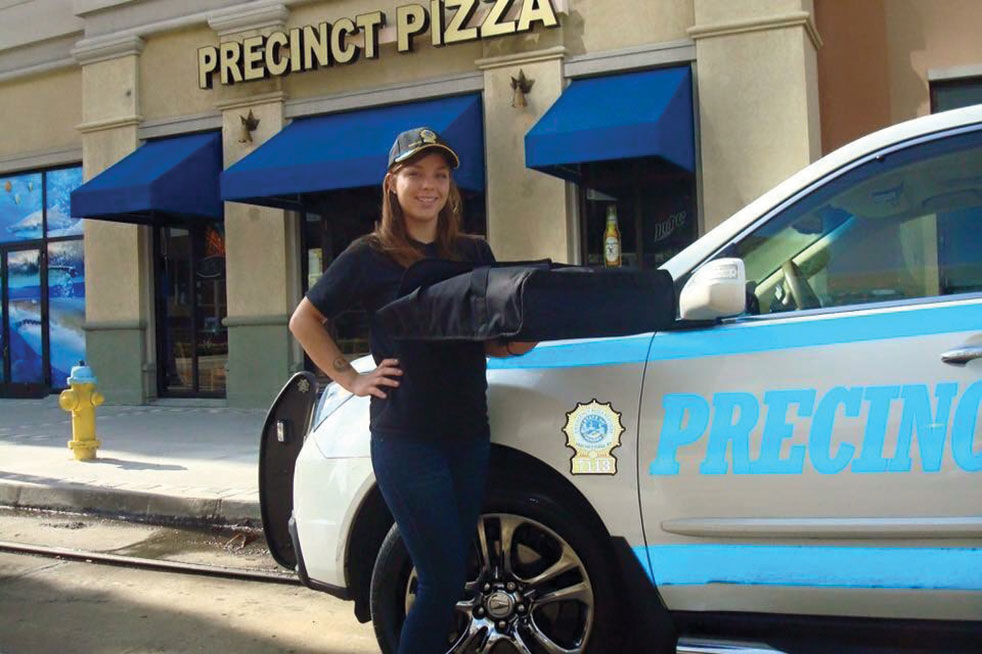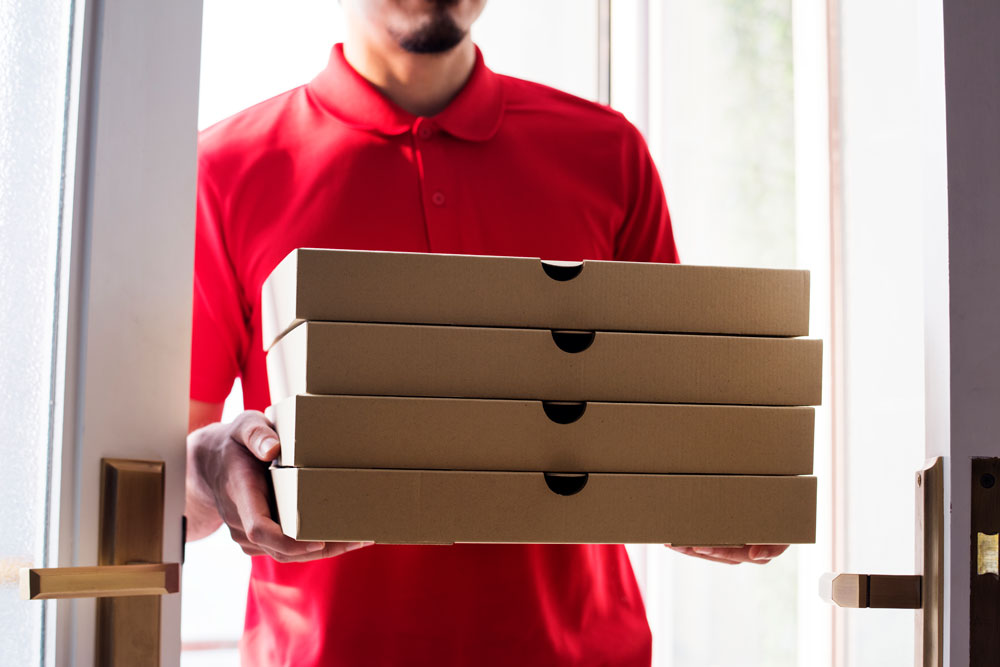In last month’s article (“The Third-Party Wave, Part 1”), I discussed the pros and cons of using an outside delivery source for your pizzeria. I noted that third-party companies can help eliminate or reduce your costs for employing, training and insuring drivers and save you some hassle in scheduling drivers and dealing with customer complaints, while allowing you to get your pizza into more customers’ hands. On the other hand, you give up a substantial percentage of each sale to the third-party company. You also may lose that all-important personal connection with your customer, and you’ll no longer have as much control over the quality of your delivered product and how the drivers represent your brand, to name a few of the disadvantages.
My restaurant, Precinct Pizza in Tampa, Florida, employs an in-house delivery staff and also uses an outside delivery service. It has worked pretty well for us so far. Would splitting deliveries be a good idea for your pizzeria, too? That’s what we’re going to consider in this month’s article.
Expanding Your Customer Base
At Precinct Pizza, we have offered delivery from the day we opened 10 years ago, but I was approached by an outside delivery company about five years ago. They had done their own polling around Tampa to identify the most popular pizzeria among the locals, and Precinct Pizza was the overwhelming favorite. For this reason, they wanted Precinct Pizza to be their go-to Italian restaurant. They made their sales pitch, but I told them I thought the whole idea was silly, since we already offered delivery to our customers.
The company insisted, however, that they would not take anything away from my current delivery business—they would only add to it. I agreed to give it a shot, and they were right. The customers they received orders from were not customers I recognized (I could tell because when the orders came through to my store, they often displayed the delivery addresses on the food tickets). During my partnership with this third-party company, my in-house delivery business never declined; it actually increased, and so did the orders from the outside delivery company. In 10 years, Precinct Pizza has enjoyed nine positive sales years, and our sales keep going up. (The only negative sales year was due to BP’s oil spill in 2010, which killed our summer business; otherwise, we undoubtedly would have enjoyed 10 straight positive sales years).
Running the Numbers
Since that initial rewarding experience with a third-party delivery company, Precinct Pizza has expanded its outside food delivery with UberEATS and Amazon Prime Now Restaurant Delivery. If they keep their promises and advertise to get new customers for my restaurant through their own marketing, I don’t believe I will lose any of my current business to them.
Now, remember, when you’re working with a third-party delivery company, you give up a percentage of each sale to that company. In our case, we lose 25% to 30%, depending on the provider. So if a customer wants to order Precinct Pizza tonight, I would obviously want them to order directly through the store, because if they order through the outside delivery company, I lose 25% to 30% of the profit.
But let’s take a closer look at the numbers. As I said, I’m currently splitting deliveries between my in-house team and outside third-party providers. If I had contracted out 100% of Precinct Pizza’s delivery business—a total of $935,701 in sales—to outside delivery services in 2015, we would have given up $280,710 in third-party delivery fees.
I also calculated that payroll for the drivers that year was $168,452, and the payroll taxes for those drivers amounted to $20,292. In addition, we spent about $2,000 on uniforms, raincoats, hot bags and other delivery items. The Non-Owned & Hired insurance premium cost for that year was about $5,000. So if we’d gone 100% with outside food delivery companies in 2015, the numbers would look like this:
Revenue lost due to fees: $280,710
Savings on driver salaries: $168,452
Savings on driver payroll taxes: $20,292
Savings on equipment expenditures: $2,000
Savings on insurance premiums: $5,000
Net loss: $84,966
As you can see, we would end up losing money if we turned over all deliveries to a third-party company. By continuing to use our own in-house delivery service in addition to a third-party service, we saved about $85,000, compared to the model of using only an outside delivery service.
 |
|
After dividing his delivery business between in-house team members like Amanda Horton (above) and third-party providers, Precinct Pizza’s Rick Drury says his in-house delivery continued to thrive and his overall orders increased. |
Using Third-Party Delivery Exclusively
If your pizzeria does lower delivery sales than mine, the savings of in-house delivery will decrease. At a certain point, it may actually make sense to do away with in-house delivery service altogether, especially if you are in a small market and can work with an outside delivery service that’s reliable and professional.
Let’s assume your driver labor percentages, insurance costs, taxes and expenses are about the same as mine. If you generate $750,000 annually in delivery sales, you would save about $68,000 by splitting your deliveries with an outside company rather than letting that company handle all of your deliveries. If you make $400,000 in deliveries, you save about $33,000.
Once your delivery sales go below $250,000 a year, it may make financial sense to use only an outside food delivery service if one is available. The time and money that you spend training, scheduling and insuring your drivers, plus other delivery-related expenses, aren’t worth the small amount of money you’d save in keeping an in-house delivery team.
For Precinct Pizza, due to our delivery volume, it’s a no-brainer—the numbers show that we should not give up our in-house delivery service. Not included in the profitability scenario listed above is the priceless additional work our professional drivers do for us. They often distribute menus to hotels, businesses and apartment buildings when they have deliveries in those areas; drivers for outside delivery companies won’t do that. Our drivers also help fold boxes, wash dishes and occasionally assist with prep when they’re not delivering. Again, you won’t get that kind of work from a third-party company’s drivers.
But if your delivery sales do not exceed $250,000 a year, you should definitely crunch the numbers and find out if going 100% with outside food-delivery companies is right for you.
In our first week with UberEATS, Precinct Pizza fulfilled 294 orders, for a total of $8,258.17. Thirty percent of that amount, or $2,477.45, went to UberEATS. I have contacted many of the major outside delivery companies and, from my research, I found that none of them allow their customers to use coupons or any other kind of discount when they place their orders. So you may be giving up 30% of each order, but these third-party companies’ customers are paying full price on all menu items. If you are nervous about giving up that 30%, you may want to run a food cost analysis on your current menu and determine if it’s time to raise your prices a little bit. That would also offset some of the costs of giving up 30% per order to an outside delivery company.
In conclusion, third-party delivery can boost your sales, but it’s not always a good idea to rely on these companies exclusively. If you already have an in-house delivery team, think carefully and do the math before you let them go. Splitting deliveries with a third-party provider may be the better option for you!













